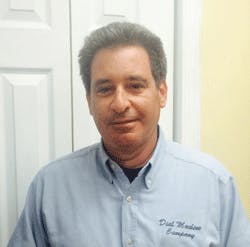After two decades of widespread offshoring in search of lower pricing, reshoring is coming home to the U.S. as business owners realize the benefits of American manufacturing knowhow.
Domestically produced precision auto parts are particularly being viewed with renewed admiration when compared with an assortment of quality control issues, higher transportation costs and logistical bottlenecks that can arise when dealing with an overseas vendor.
“It’s harder to ensure quality control or make design changes with an offshore supplier unless you have an office there,” concurs Bruce Dobbs, CEO of Run-Rite/C.A.T. Products in Stroudsburg, Pa., which provides specialty cleaners, lubricants and shop equipment to automotive installers. “That adds significant overhead and it’s still challenging to try to respond to the market and innovate because of differences in distance, time, language, culture and currency.”
One of the best benefits of reshoring is the ability to obtain a fast, flexible response with enhanced quality control, according to Dobbs, a satisfied Dial customer who is pleased that he chose a U.S. machine shop as a key vendor.
“We’ve had many offshore bids and samples sent to us but weren’t happy with the quality because they didn’t hold tolerances, properly clean or debur, and would be rejected if we put them in the field,” he says.
“We have critical tolerances that must be met in size, shape, location, and some parts have micro-drilled vent holes,” Dobbs explains. “One tool we make has to be very carefully manufactured so it properly atomizes the solution. We can’t afford to lose a customer over an inferior part.”
He additionally notes that Giordano has been consistently attentive to delivering a lower cost of ownership, better quality and faster response times.
“We do a lot of small, custom runs and Dial Machine is flexible enough to do those for us, including prototyping under sales deadline pressure,” says Dobbs. “Since Dial Machine does just-in-time work for us, it minimizes our inventory carrying costs. We’re able to cut our inventory to about one-third the level we’d have to stock if we offshored, which frees up our cash flow to be more productive.”
When Run-Rite was trying to build an atomizing tool for a customer, for instance, the company had to make a number of changes until they got it to their customer’s liking.
“With Dial Machine’s help, we went from product concept to finished piece in two weeks with all the needed changes,” he reports. “That’s resulted in ongoing sales with the customer and other customers. If we’d attempted that with an offshore partner, it would have taken three to six months, assuming no problems, and we would’ve missed our window of opportunity.”
“When a manufacturer relies on product innovation to stay competitive in the market, offshoring production can expose their designs to patent infringement, counterfeiting and even low-bid competition that copies their designs and undercuts them in the market,” according to Giordano, who recently answered a series of questions from Aftermarket Business World about his efforts to promote the benefits of selecting domestic production operations:
Q: What trends are you seeing within the North American automotive parts industry regarding overseas vs. domestic manufacturing and sourcing?
A: I believe sourcing is coming back to the U.S. However, most of the companies want the components manufactured at prices comparable to what they were paying overseas.
Q: Isn’t overseas production less expensive than what domestic manufacturers can provide?
A: Not necessarily when you factor in the total cost of ownership and all incidentals involved as well as the time lost when parts are delayed at ports.
Q: What are some of the benefits that can be obtained by selecting a domestic manufacturer?
A: I believe quality is superior, working relationships are easier to establish and collaboration for “win-win” situations are much more attainable.
Q: What are some factors to consider regarding protection of intellectual property?
A: I’ve heard first-hand of foreign suppliers copying U.S. data and designs and making components for their own benefit.
Q: How does domestic manufacturing limit the proliferation of counterfeit parts?
A: The U.S. has much more stringent laws that we must abide by, so we have “skin in the game” and don’t want to jeopardize any relationships.
Q: What types of production services do you provide to the auto industry?
A: We manufacture re-manufactured components for companies that do remanufacturing of spare parts.
Q: What are some of the components that you produce?
A: All types of sleeves, bushings, mechanical fittings, pistons and shafts – many parts with tight tolerances and surface finishes.
Q: You also supply prototypes of ongoing engineering projects?
A: Yes. We value building long-term relationships with our customers. If we understand their needs, we can be more competitive.
Q: What are your plant’s capabilities?
A: CNC Turning and Vertical Milling as well as Swiss Multi-Axis CNC Turning and Multi-axis Milling and Centerless Grinding.
Q: What is “lights out manufacturing,” and is it applicable to automotive parts production?
A: Producing components after normal business hours when no employees are present. It is applicable to many automotive components.
Q: How common is lights out manufacturing?
A: I believe it is growing rapidly because at the prices we are forced to manufacture parts versus the overhead involved, we could not stay in business otherwise.
Q: Do you expect this technology to increase in popularity?
A: New technology is constantly being introduced, and it will have to be adapted or U.S. manufacturers will not be able to compete due to all the OSHA and EPA regulations we have to adhere to that foreign manufacturers do not.
Subscribe to Aftermarket Business World and receive articles like this every month….absolutely free. Click here.


